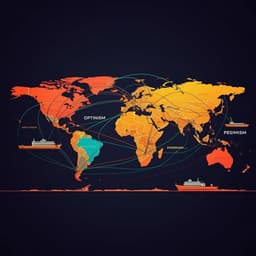
Economics
Strategies for selecting trading partners based on economic complexity of international trade networks: A comparison between Chinese and the US markets
Z. Ren, W. Du, et al.
This fascinating research, conducted by Zhuoming Ren, Wenli Du, Ziyi Zhao, Li Zhao, and Tongfeng Weng, delves into the complexities of trading partner selection through the lens of economic complexity theory. It reveals unique market dynamics and strategic insights into diversification and clustering within Chinese and US trade networks from 2001 to 2015.
~3 min • Beginner • English
Related Publications
Explore these studies to deepen your understanding of the subject.







